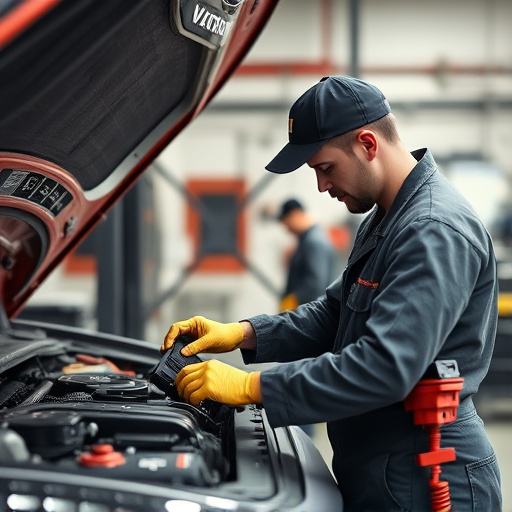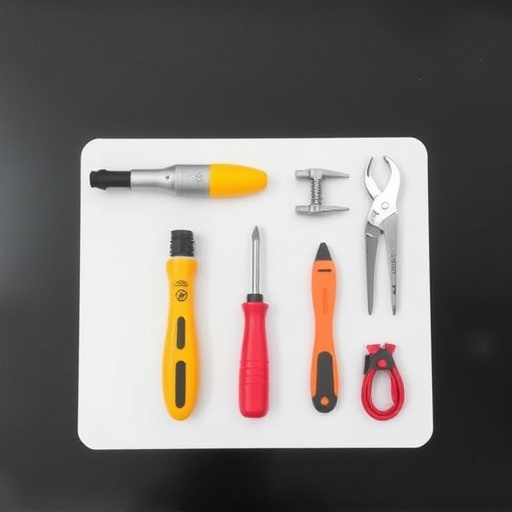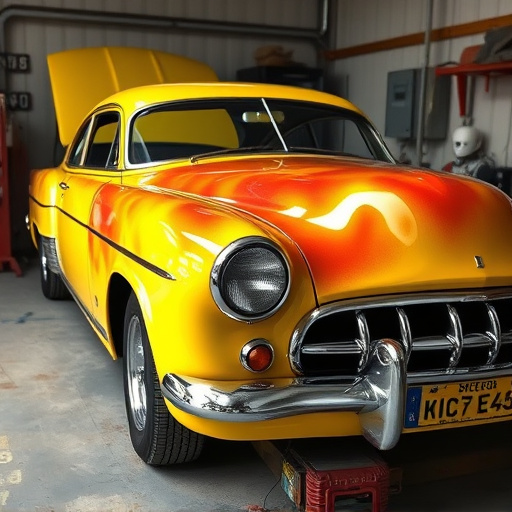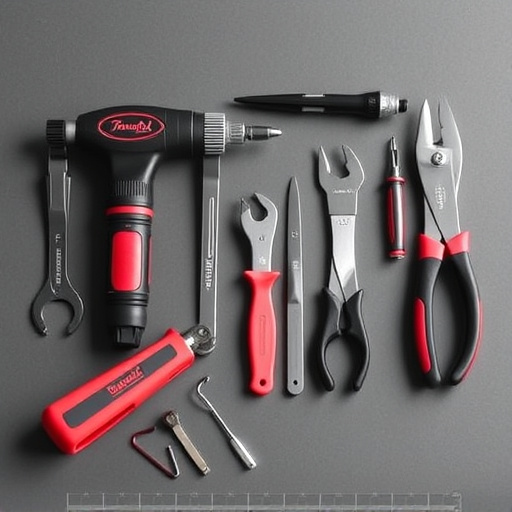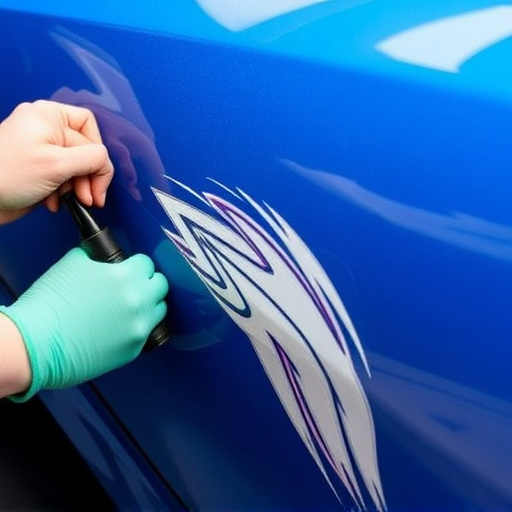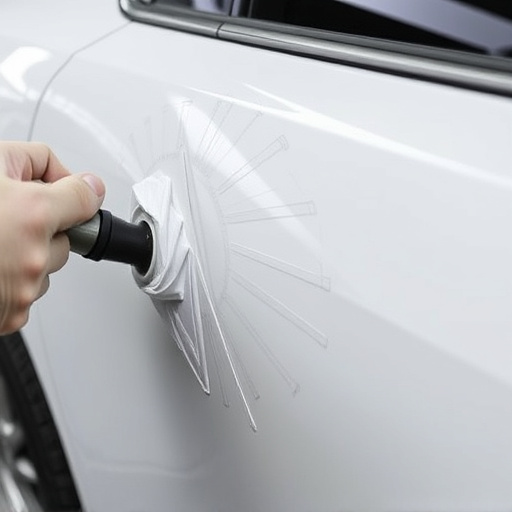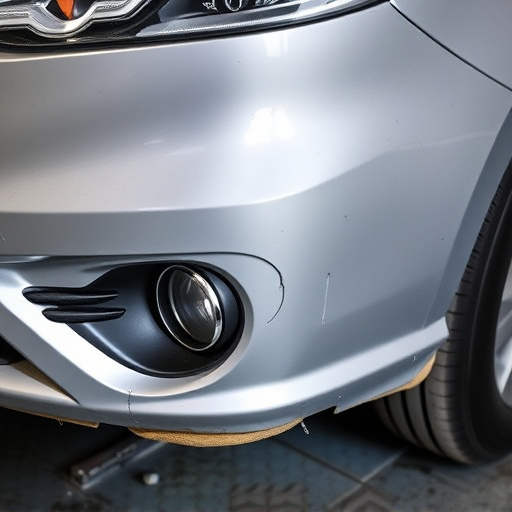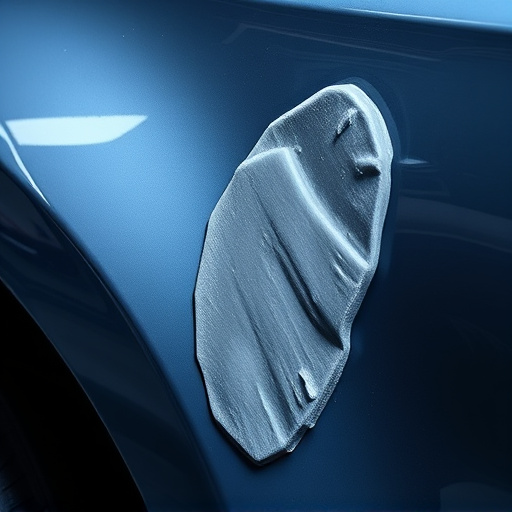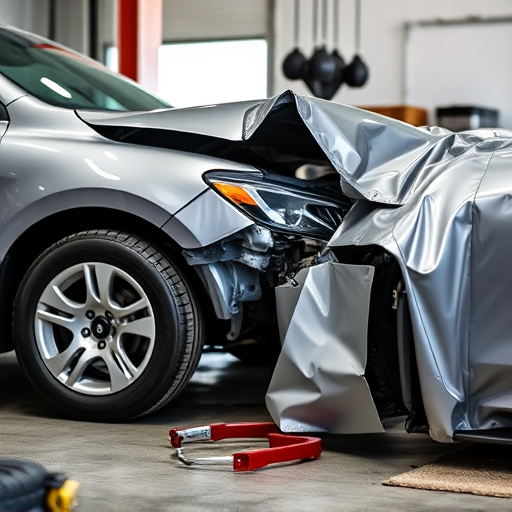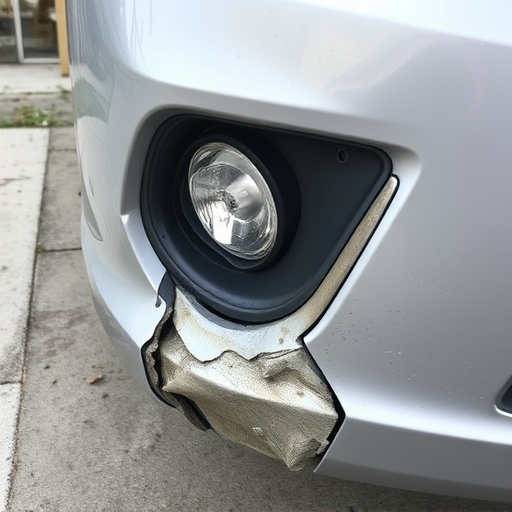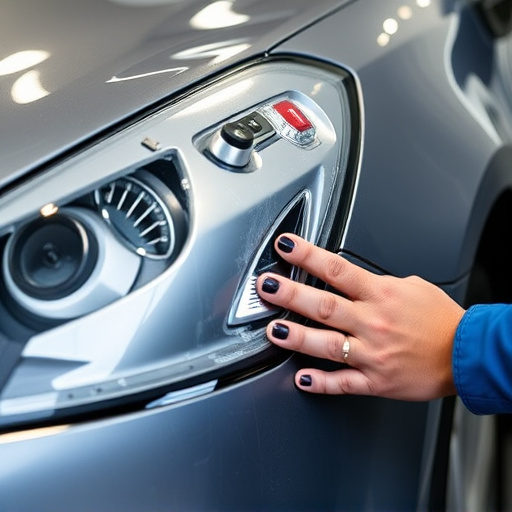Designing sustainable collision centers is a priority for eco-conscious vehicle repair services. These facilities integrate renewable energy sources like solar panels and efficient water management systems, using recycled, non-toxic materials to minimize their environmental impact. Strategic natural lighting and energy-efficient systems reduce operational costs and waste, creating healthier spaces for staff and customers. By focusing on green building practices and sustainable operations, these centers set a new industry standard for eco-friendly vehicle repair, demonstrating environmental stewardship while enhancing customer experiences.
In the quest for a greener future, the automotive industry is witnessing a paradigm shift towards sustainable collision centers that go beyond mere compliance. These eco-conscious facilities aren’t just meeting green standards; they’re setting new benchmarks. Through innovative design, efficient processes, and cutting-edge technology, sustainable collision centers are reducing their environmental footprint while leading the way in eco-friendly services. This article explores how these centers are transforming the automotive sector with their commitment to sustainability.
- Designing Eco-Friendly Facilities: The Foundation of Sustainable Collision Centers
- – Exploring green building materials and energy-efficient systems
- – Incorporating natural lighting, water conservation, and waste reduction strategies
Designing Eco-Friendly Facilities: The Foundation of Sustainable Collision Centers

Designing Eco-Friendly Facilities is the cornerstone for creating sustainable collision centers that set new industry standards for environmental responsibility. These facilities are meticulously crafted to minimize their ecological footprint, incorporating renewable energy sources, efficient water management systems, and eco-friendly materials wherever possible. For instance, solar panels on rooftops generate clean electricity, while rainwater harvesting systems collect and reuse water for various operations, including car dent repair processes.
The interior of these collision centers also reflects sustainability principles, with smart design choices that reduce waste and promote energy conservation. Natural lighting is maximized through strategic window placement, reducing the reliance on artificial illumination. Additionally, using recycled and non-toxic materials in construction and furnishing not only reduces environmental impact but also creates a healthier working environment for staff and customers seeking body shop services.
– Exploring green building materials and energy-efficient systems
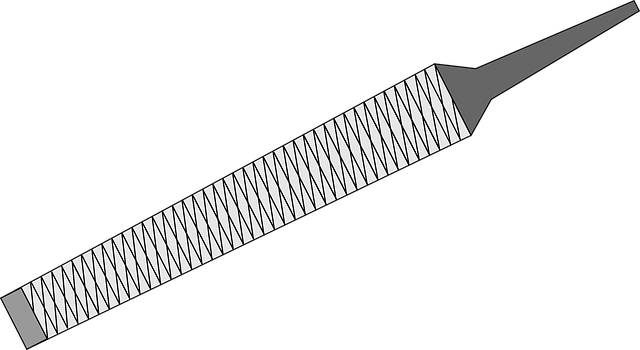
In the pursuit of creating sustainable collision centers, one must look no further than the materials and systems that go into building them. Green building materials offer an eco-friendly alternative to traditional options, reducing the environmental impact during both construction and operation. This includes utilizing recycled metal, non-toxic paints, and sustainable wood sources, ensuring a healthier indoor environment for both staff and customers.
Moreover, integrating energy-efficient systems is paramount in any sustainable collision center. Solar panels, smart lighting, and high-efficiency heating/cooling units not only decrease operational costs but also significantly lower the facility’s carbon footprint. These measures not only contribute to the overall sustainability of the center but also set a benchmark for the industry by showcasing that vehicle repair services, auto frame repair, and vehicle dent repair can be provided without compromising environmental stewardship.
– Incorporating natural lighting, water conservation, and waste reduction strategies
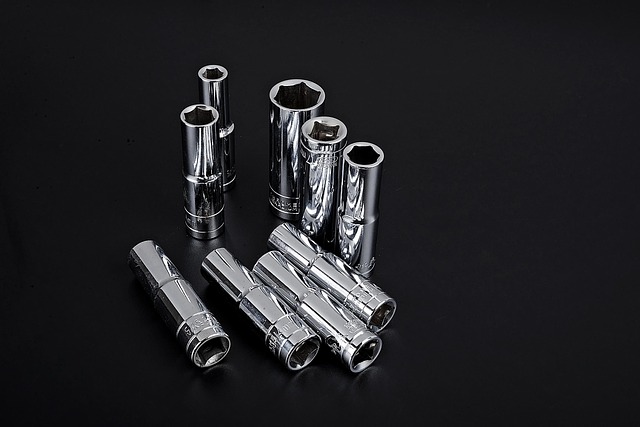
In the quest for sustainable collision centers, embracing eco-friendly practices is paramount. One effective strategy involves incorporating natural lighting, which reduces energy consumption and creates a healthier environment for both staff and vehicles. By maximizing daylight through well-placed windows and skylights, these facilities not only minimize electricity usage but also contribute to improved interior air quality, enhancing the overall customer experience.
Furthermore, sustainable collision centers prioritize water conservation and waste reduction. Implementing efficient fixtures and appliances, such as low-flow faucets and water-saving toilets, plays a significant role in reducing water usage. Additionally, adopting recycling programs for materials like metal, plastic, and glass from vehicle restoration and auto detailing processes can substantially cut down on waste sent to landfills. These measures not only reflect a commitment to green standards but also position these centers as leaders in the industry, setting a benchmark for environmental stewardship in vehicle repair and Mercedes Benz repair services.
Sustainable collision centers aren’t just facilities; they represent a paradigm shift in auto repair, prioritizing environmental stewardship while exceeding industry green standards. By integrating eco-friendly design principles, such as utilizing green building materials, implementing energy-efficient systems, and adopting natural lighting, water conservation, and waste reduction strategies, these centers not only minimize their ecological footprint but also foster a culture of sustainability that benefits both the planet and its inhabitants. As we move forward, embracing sustainable collision centers is not just an option—it’s a necessity for a greener future.
